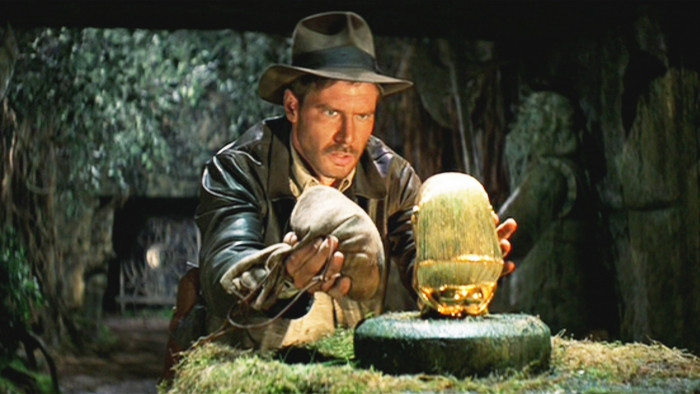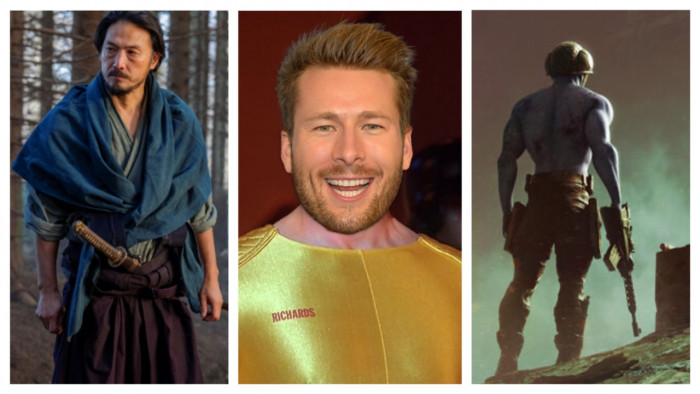US Navy Seal Marcus Luttrell tells Joe Ellison the incredible true story behind new film Lone Survivor...
"My heart pumped hard. The hair on my neck stood on end. My throat went dry – it felt like kissing a girl for the first time."
There’s no misty-eyed sentiment or romance on the face of ex-US Navy Seal Marcus Luttrell when ShortList sits opposite him in a New York hotel room. Fingers pressed to his temple as if he’s back in the moment, he’s quietly describing the breathless seconds before a brutal firefight which saw him and his three teammates set upon by an entire Taliban army.
It was 27 June 2005, and fast-roping out of a Chinook helicopter over Afghanistan’s Korangal Valley were Lt Mike Murphy, Matthew ‘Axe’ Axelson, Danny Dietz and medic-cum-sniper Luttrell – a four-man recon team on a mission to capture or kill Ahmad Shah, the notorious Taliban Army leader believed to have masterminded a series of attacks on US forces in the region.
“We had a bad feeling about the operation from the get-go,” says Luttrell. And while no one could ever have predicted the events about to unfold, as the Seal Team trekked two miles in darkness before reaching the mountainous slopes overlooking the village of Chichal, it wasn’t long before those premonitions proved fatally accurate.
No complaining, no crying
As dawn broke, three goat herders stumbled across the soldiers’ positions. Knowing these were likely Taliban sympathisers, they reasoned that the mission was over. “My thought was that we should take them out,” says Luttrell, of these unarmed locals. That call, however, fell to Murphy: “This is a young man, presented with horrible options – think of the biggest decision you’ve ever made in your twenties,” says Peter Berg, director of the forthcoming adaptation, Lone Survivor (a project Berg prepared for by spending months in Iraq with Seal Team Five, going out on missions and seeing “intense, violent and extraordinary” moments).
“The guys could have killed them,” he continues. “Letting them go meant they knew they would have to fight eventually, and they cut them loose. There is something very human about elite warriors doing that.” With the herders scrambling downwards, the Seals did the opposite, retreating to an emergency extraction point near the summit where they tried to communicate with base. No signal. Within the hour they were surrounded by Shah and his army.
“Surrendering never crossed our minds. No complaining, no crying, no wanting to quit,” says Luttrell of his feelings before that initial squeeze of the trigger when the first target came scrambling into his sight through the woodland. Luttrell shot once, and his target fell to the floor. “From your first shot to your last, the adrenaline starts flowing and it doesn’t stop until it’s done. You’re not shaking or nervous because your muscle memory kicks in from training – senses are heightened.”
Over the next 30 minutes the soldiers were bombarded by RPK light machine guns, AK-47s, rocket propelled grenades and 82mm mortars. The men even raced through the trees and inclines to engage in hand-to-hand combat.
Falling down
The onslaught forced a change of tactic, reveals Luttrell: “When we started receiving bad injuries we stopped taking headshots and aimed to injure instead – this meant the guy’s buddy might come to help him, taking two out of the game. We also took suppressors off our weapons because the enemy hadn’t heard our rounds going off and kept pouring forward.”
Such was the ferocity of the attacks, Luttrell and his bloodied colleagues soon had no choice but to fall down the cliff edge they’d been penned against, aggravating newly sustained injuries. Flesh was raw and bones were hanging out as they tumbled on. Having regrouped at the bottom of the next level, Murphy, Luttrell and Dietz took shelter behind a group of rocks to evade enemy fire from above, each man hearing whenever the other was shot – a sound Luttrell claims is like no other: “When a round is fired, it makes a whipping, cracking sound, and when that round pierces through flesh – you’ll never forget that noise.”
The sound was all too frequent, fatefully so for Murphy and Dietz, who Luttrell saw let out their final breaths. Axelson, meanwhile, was nowhere to be seen, so Luttrell rolled down another hillside, unaware he would soon be the only member of the team left alive.
More tragedy was to strike. When rescue choppers arrived at the summit to insert troops where the fighting had occurred, Taliban fighters began firing at the aircraft. One hit a helicopter’s rear rotors with an RPG, causing it to crash and kill all 16 on-board. It was the largest loss of life in one day for Naval Special Warfare since the Second World War.
Luttrell wasn’t to know, resting under a rock, severely injured: he had bullets lodged in his back and leg, a cracked pelvis, a torn shoulder, heavy facial damage, tongue bitten in half, a crushed nose, a pulverised hand and a stray fragment of tree branch hanging out of his shin bone. It didn’t look good.
Still, Luttrell remembered his training. He put dirt into his wounds to halt the bleeding, aware his only goal now was survival: “When he woke up in the morning and got his hearing back, he drew lines in the dirt and told himself to get to those lines,” says Berg. “It was that drive and courage that led him to a stream of water." And it was there he was approached by several Afghans – only these weren’t Taliban sympathisers, they came from a village that upheld Pashtunwali, an ancient custom that requires the protection of a guest at any cost – and after reassuring Luttrell, who waved his grenade as an insurance policy, the men bundled him towards the village and safety.
Muhammad Gulab was the man who pleaded the Seal’s case with neighbours. For days he nursed Luttrell. “Marcus didn’t let go of that grenade for one minute,” says Berg. “He could tell this guy’s neighbours were opposed to his presence. These guys spoke no English, so his guard was constantly up.”
Then, ingeniously, having previously drawn maps of the nearest US bases on his legs, Luttrell asked Gulab to copy the maps on to paper, then, along with another letter he had written to explain the situation, handed the letters to an elder who made a two-day journey to the nearest US outpost to alert them.
The cavalry duly followed and Luttrell was rescued shortly after, even taking his friend Gulab in the helicopter with him. The pair still enjoy a close friendship today. Back here in our interview, we meet his other best friend: Rigby, a rehabilitative therapy dog who at one point is beckoned over for a comforting hug when the emotion of describing a grisly battle scene becomes all too much for the Navy Cross and Medal Of Honor winner.
Scar tissue
There’s a deep sincerity to this bona fide war hero, his quiet, pensive demeanour at direct odds to his imposing barrel-chested frame. He moves gingerly. Three of the many major surgeries he’s undergone since the operation include the insertion of a protective cage around his spine, artificial discs in his back, and a reconstructed hand – though, according to Berg, the mental scars are the ones hardest to carry. “I’ve seen how he’s haunted by demons,” explains Berg. “Which makes it even more impressive how he now devotes his life to telling the stories of his fallen brothers.” So, does being the sole survivor of one of the American military’s bloodiest and costliest tragedies carry any guilt? “You can’t think like that,” says Luttrell, “I’ll never stop missing my teammates – they died a good death, a warrior’s death, firing with their boots on. The story doesn’t define who I am.”
Maybe so, but in symbolising the only good to come from a doomed mission and epitomising survival at its rawest and humanity at its most compassionate – well, even Hollywood couldn’t have written that.
Lone Survivor is at cinemas nationwide from 31 January; Universal Pictures
Latest
Related Reviews and Shortlists


The 10 best war movies of the 21st century









